This article was co-authored by wikiHow Staff. Our trained team of editors and researchers validate articles for accuracy and comprehensiveness. wikiHow's Content Management Team carefully monitors the work from our editorial staff to ensure that each article is backed by trusted research and meets our high quality standards.
This article has been viewed 224,289 times.
Learn more...
Whether you're bicycling, playing softball, riding a motorcycle, or gearing up for your first football game, wearing a helmet can help protect you from traumatic brain injuries. But your helmet is only effective protection if it fits you correctly. The most common way of determining helmet size is measuring your head circumference, but nothing replaces a fitting session done on your own or with a store clerk's help.
Steps
Measuring your Head’s Circumference
-
1Determine helmet shape. You should consider helmet shape before measuring for helmet size. This is especially important if you are looking for a motorcycle helmet. There are three main types of shapes, which are long oval, intermediate oval, and round oval. The helmet shape matters for most helmet types, though it is more important for motorcycle and riding helmets.[1]
- Long oval means that the shape of the head, and helmet, is longer front-to-back than side-to-side.
- Intermediate oval means that the shape of the helmet will be slightly longer from front-to-back than from side-to-side. This is the most common shape.
- A round oval shape is one that is almost equal from front-to-back as it is side-to-side.
-
2Wrap the flexible measuring tape around your head. You should position it just above your eyebrows. Make sure the measuring tape lays flat against your head but doesn't pinch. It should be level all the way around.[2]
- Doing this on your own is a challenge. Ask a friend or family member for help, or use a mirror to help you level the tape.
- If you're measuring your head circumference on your own, cross the ends of the tape on the front of your head to make reading the measurement easier.
Advertisement -
3Read the measurement off the tape. Take several measurements. The largest measurement you take is the measurement to go by. Write down this measurement so that you will remember it when it comes to choosing a helmet.[3]
Trying on a Helmet
-
1Determine helmet type. The type of helmet you choose depends on what you need it for. Each type of helmet is designed to withstand the specific types and forces of impact unique to that sport. For example, don't wear a bicycle helmet for climbing, or a batting helmet on your motorcycle. In some instances, there may be multiple types of helmet for one sport, like biking.[4]
- A mountain bike helmet is made specifically for an off-road terrain.
- A road helmet is lightweight and compact for aerodynamic advantages.
- A BMX bike helmet is made to fit the demands of BMX racing.
- A leisure helmet is a helmet made without more advanced features.
-
2Select a helmet designed to fit your head circumference. Most helmets are designed to fit a range of head circumference measurements. Most helmet manufacturers list the head circumference prominently on the helmet packaging. You may see a size designation--small, medium or large--that correlates with a helmet sizing chart that lists head circumference measurements.
-
3Try the helmet on. Try the helmet on before purchasing to make sure it fits correctly. The helmet should cover both your forehead and the back of your head. If you put it on and shake your head front and back or side to side, the helmet shouldn't wobble in either direction. And if somebody puts their hand on top of the helmet and twists it, your head should go with the helmet. If the helmet twists freely on your head, it's too loose.
Checking Before Use
-
1Adjust the helmet's chin strap. If the helmet requires a chin strap, check it before use. It should fit snugly, but not pinch. The chin strap shouldn't restrict your ability to breathe, swallow, or speak. It should not, however, be so loose that you can easily fit a finger between the strap and your chin.
-
2Try additional padding. Many helmets come with removable padding that can be washed after use to keep them hygienic. It is also an option to buy additional padding to add to the helmet. You should only buy additional padding if you can not find a helmet that fits you snugly and properly.
-
3Inspect before use. Check the helmet or have it inspected before each use. The helmet should not be cracked, missing foam, or damaged in any way. If the helmet is damaged, do not use it. Instead, return it to the store, or send it back to the manufacturer.
- If you must return the helmet, do not ride, bike, or play until you receive another one.
Community Q&A
-
QuestionI've measured my head size, but I'm really oppressed by the results. Can I change them to make me feel better?
 Community AnswerSorry, you can't change your head size. Be happy with who you are and with your head size.
Community AnswerSorry, you can't change your head size. Be happy with who you are and with your head size. -
QuestionWhat do I measure my head in? Inches or centimeters?
 Community AnswerIt depends -- you might want to measure in both only cause some helmets have the tag that says 14 inches in size or 54 centimeters. Measure in what you usually use, then convert it to the other measurement and take both along with you for certainty of size.
Community AnswerIt depends -- you might want to measure in both only cause some helmets have the tag that says 14 inches in size or 54 centimeters. Measure in what you usually use, then convert it to the other measurement and take both along with you for certainty of size. -
QuestionHow does head size correspond to helmet size?
 Community AnswerHelmet size is specified in terms of the head sizes that it fits. The measurement of your head should be within the measurement range for the helmet.
Community AnswerHelmet size is specified in terms of the head sizes that it fits. The measurement of your head should be within the measurement range for the helmet.
Warnings
- Do not go biking, riding, or playing without a helmet, or with an improperly fit helmet. You could risk injury or death.⧼thumbs_response⧽
- You should only use a helmet specifically fit for you. It is dangerous to use a helmet fit for another person’s head.⧼thumbs_response⧽
References
About This Article
To measure helmet size, ask a friend or family member to wrap a flexible tape measure around your head, just above your eyebrows. They may need to take several measurements to find the largest one, which is what you should use to determine your helmet size. Write down the measurement where the length of the tape overlaps with the end and put it someplace safe so you’ll remember it. The right helmet size for you will depend on the type of helmet you’re getting, but most helmets are designed to fit head sizes that fall into a particular range—for instance, 55-57 cm. If your head size falls into the right range, try the helmet on and adjust the chin strap for the best fit. Many helmets also come with removable padding and an adjustable band inside. Experiment with adjusting the padding and inner headband so it fits securely and feels comfortable. To learn how to tell if a helmet fits by trying it on, scroll down!
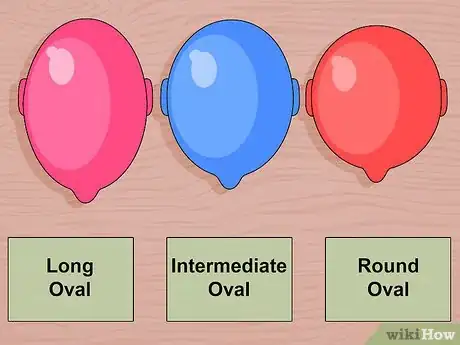
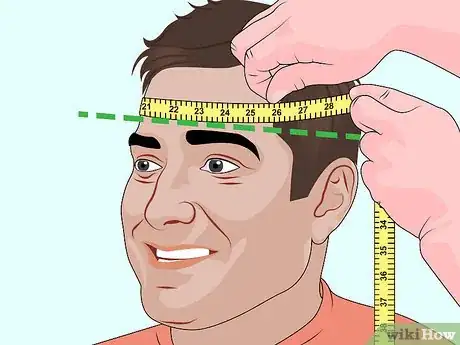
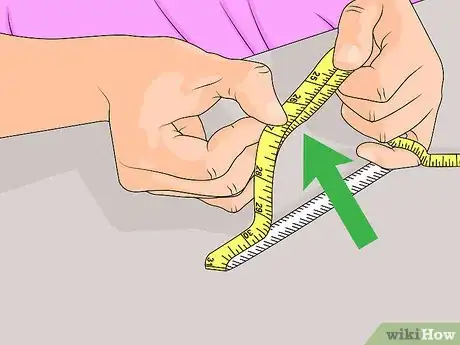
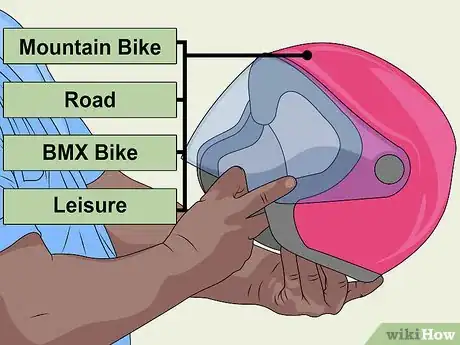

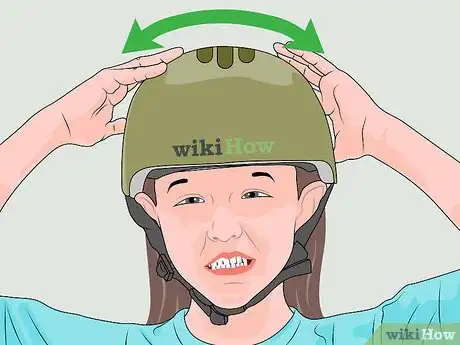
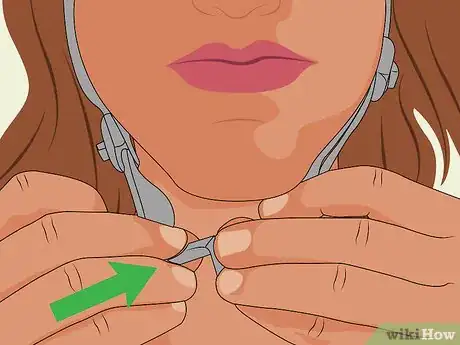
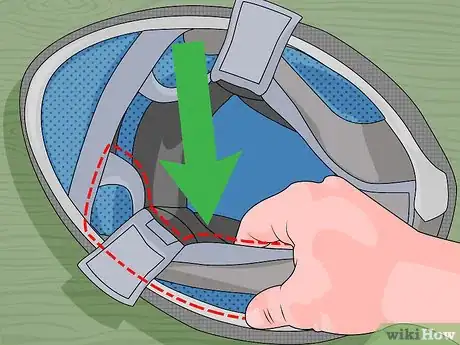
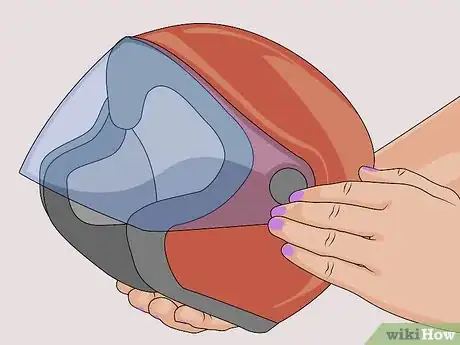
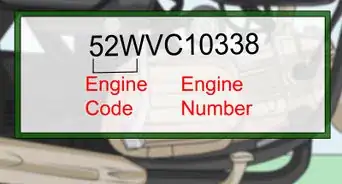
-Step-13.webp)
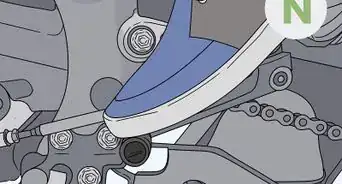




-Step-17.webp)











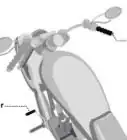
-Step-13.webp)




































